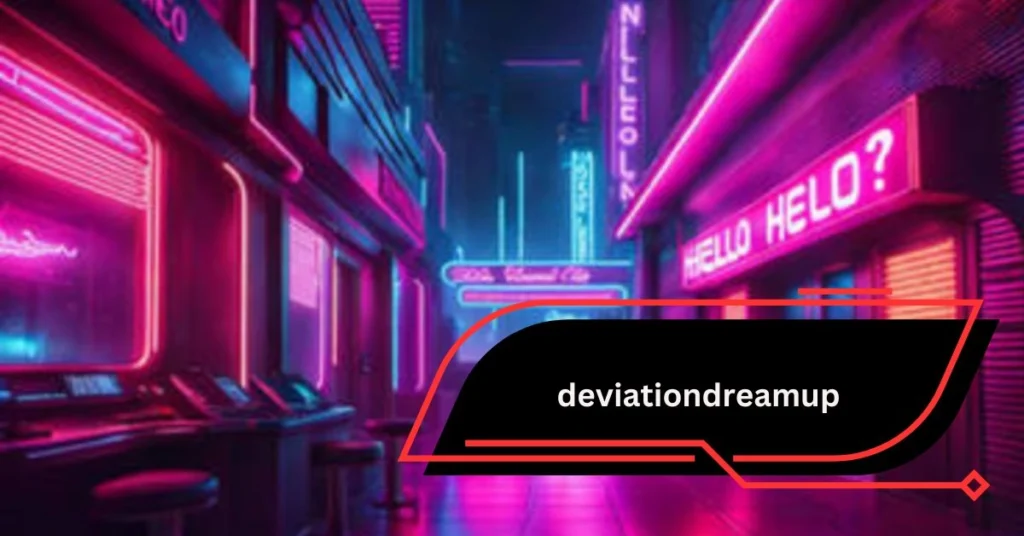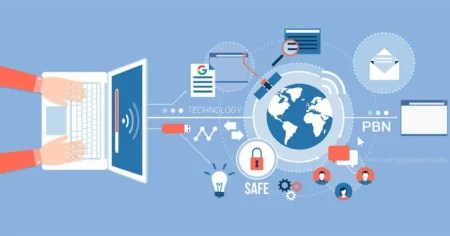Introduction
In a world driven by creativity and technological advancements, the fusion of ideas from diverse fields is essential to innovate and push boundaries. One such concept, DeviationDreamUp, has recently captured the imagination of creative professionals, developers, and tech enthusiasts alike. It symbolizes the intersection of creativity and deviation from traditional thought, leading to groundbreaking ideas, methods, and applications. This article delves deep into the essence of DeviationDreamUp, exploring its applications, origins, and potential to shape future industries.
What is DeviationDreamUp?
DeviationDreamUp is more than just a catchphrase. It refers to a process or concept where creators consciously move away from established norms to spark fresh ideas. By deviating from conventional methodologies, creators engage in a process that encourages the formation of innovative, dream-like solutions to complex problems. This creative deviation is not bound by any one industry, making it versatile in fields such as art, design, technology, and even business strategies.
The Philosophy Behind DeviationDreamUp
At its core, DeviationDreamUp draws from the philosophies of divergent thinking and lateral problem-solving. By not adhering to established norms, individuals can explore avenues that are often overlooked. This way of thinking emphasizes breaking away from what’s expected, allowing for creativity to flourish without constraints.

The concept also integrates elements of daydreaming and free-flow ideation. Daydreaming, often dismissed as non-productive, can be a powerful tool for creative breakthroughs when harnessed correctly. By merging purposeful deviation with dream-like ideation, DeviationDreamUp taps into a mindset that values unconventional approaches.
Origins of DeviationDreamUp
The term “DeviationDreamUp” emerged from the evolving discourse around creativity in the digital age. As artificial intelligence (AI), machine learning, and automation take over more structured tasks, the need for human creativity becomes even more critical. The term was coined to emphasize the importance of breaking from algorithmic thinking and exploring imaginative possibilities.
The philosophy behind it can be traced back to early 20th-century art movements like Dadaism and Surrealism, which focused on irrationality, spontaneity, and unexpected juxtapositions. In the 21st century, the digital revolution has adapted these ideas to software development, content creation, and marketing, among other sectors.
DeviationDreamUp in Creative Industries
Art and Design
In art and design, DeviationDreamUp manifests as a form of visual deviation where artists break away from expected patterns or styles to introduce new visual languages. Whether through abstract art, surreal digital renderings, or avant-garde fashion designs, this concept encourages creators to push the boundaries of their mediums.
For instance, 3D design software allows artists to create immersive, dream-like environments that deviate from reality. These visual spaces become playgrounds for experimentation, embodying the essence of DeviationDreamUp.
Music and Sound Engineering
In music, the application of DeviationDreamUp has been transformative. By deviating from traditional music theory and structure, musicians and sound engineers are able to create new genres and sounds. Artists such as Aphex Twin and Bjork are known for incorporating unconventional rhythms and soundscapes, embodying this approach. Their music has inspired generations to challenge the confines of established musical frameworks.
Electronic music production has particularly embraced this concept, using digital tools to experiment with sound design, glitch aesthetics, and non-linear compositions, producing auditory experiences that feel dream-like and otherworldly.
DeviationDreamUp in Technology
Artificial Intelligence and Machine Learning
DeviationDreamUp can be seen in AI development when researchers move away from traditional programming paradigms. By encouraging AI to generate unique, unpredictable results (as in Generative Adversarial Networks (GANs)), technologists embrace deviation to create art, music, and design that surpass human capabilities.
Tools like Dream by Wombo and DALL·E are practical examples of this deviation, where AI assists in creating unique visual art based on abstract inputs, moving far beyond traditional image generation.
Virtual Reality (VR) and Augmented Reality (AR)
DeviationDreamUp has an essential role in immersive technologies such as VR and AR. These platforms enable developers to create environments and experiences that deviate from the rules of the physical world. In VR, spatial limitations disappear, allowing for dream-like realms that challenge the user’s perception of reality.
For instance, Surreal VR games like Superliminal use spatial manipulation and optical illusions to immerse users in worlds where conventional logic doesn’t apply, allowing for an exploration of subconscious thought through interaction.
User Experience (UX) Design
In UX design, deviating from standard interfaces or user flows can result in intuitive, innovative interactions. DeviationDreamUp in this field means questioning long-held assumptions about usability. Designers can explore unconventional layouts, interactive elements, and visual storytelling, offering users a fresh, engaging experience.
A notable example is the minimalist UI movement, which deviates from cluttered, feature-heavy designs to emphasize simplicity, leading to more focused and user-friendly interactions.
DeviationDreamUp in Business and Strategy
Business Innovation
In business, DeviationDreamUp can drive innovation by encouraging leaders to think outside conventional strategies. Traditional business models often emphasize risk aversion, but DeviationDreamUp champions the opposite: embracing uncertainty to discover untapped markets and revolutionary products.

This concept is embodied in companies like Tesla, which deviated from traditional automobile manufacturing approaches, disrupting the entire automotive industry. By combining AI, sustainable energy, and autonomous driving, Tesla’s innovative mindset reflects the DeviationDreamUp philosophy.
Marketing and Advertising
In the competitive world of marketing, DeviationDreamUp encourages campaigns that break free from formulaic advertising techniques. Viral campaigns often emerge from a bold deviation from traditional marketing tactics, capturing attention through novelty and creativity. For example, Nike’s “Dream Crazy” campaign pushed the boundaries by aligning itself with social causes and leveraging emotional storytelling, deviating from more conventional product-centered ads.
Entrepreneurship
Entrepreneurs embracing DeviationDreamUp tend to challenge market norms and experiment with disruptive business models. Platforms like Airbnb and Uber are famous for rejecting conventional ideas about hospitality and transportation. By dreaming up entirely new paradigms, these businesses have redefined industries.
DeviationDreamUp in Education
Creative Problem-Solving in Education
DeviationDreamUp is becoming a crucial component of modern education, where students are encouraged to break away from rote learning and engage in creative problem-solving. Educational models like Montessori and STEAM (Science, Technology, Engineering, Arts, Mathematics) emphasize learning through exploration and creativity, which is aligned with the principles of deviation and imaginative thinking.
Digital Learning Platforms
The rise of digital learning platforms such as Khan Academy and Coursera showcases how deviation from traditional classroom methods can create more accessible and personalized educational experiences. These platforms have shifted away from rigid curriculums to provide tailored, self-paced learning journeys that enable students to explore their interests more freely.
DeviationDreamUp in Psychology
Creativity and the Subconscious Mind
DeviationDreamUp is closely linked to theories in psychology about the subconscious mind and creativity. Psychologists like Carl Jung believed that accessing the subconscious could lead to creative breakthroughs. By engaging in activities that promote free-flowing thought, individuals can tap into deeper layers of their mind where dream-like ideas reside.
Overcoming Creative Blocks
For individuals experiencing creative blocks, DeviationDreamUp offers a solution by encouraging them to break away from their usual thought patterns. Techniques such as mind mapping or freewriting allow people to explore tangential ideas that might lead to unexpected, innovative solutions.
Future of DeviationDreamUp
Artificial Creativity and Human-AI Collaboration
As AI continues to evolve, the concept of DeviationDreamUp will likely play a significant role in how humans and machines collaborate to create. We are moving towards a future where AI could enhance human creativity by generating multiple potential deviations, allowing humans to choose and refine the most innovative options. This fusion of human intuition with machine learning could revolutionize fields like art, design, and even medicine.
Applications in Social Change
DeviationDreamUp has the potential to drive not just artistic and technological innovation but also social change. Movements that deviate from traditional political, economic, or social norms can reshape societies. For example, the shift towards remote work during the pandemic was a deviation from traditional corporate structures, and it has led to a fundamental rethinking of work-life balance and productivity.
Conclusion
DeviationDreamUp is not a one-size-fits-all concept; it is a mindset that can be applied across various industries and disciplines. From creating groundbreaking art and music to driving business innovation and solving global problems, DeviationDreamUp emphasizes the power of deviation from established norms to discover new possibilities. As the world continues to evolve, those who embrace this philosophy will be at the forefront of the next wave of creative, technological, and societal breakthroughs.
Read More: KDNK Jeans: Redefining Denim Fashion









